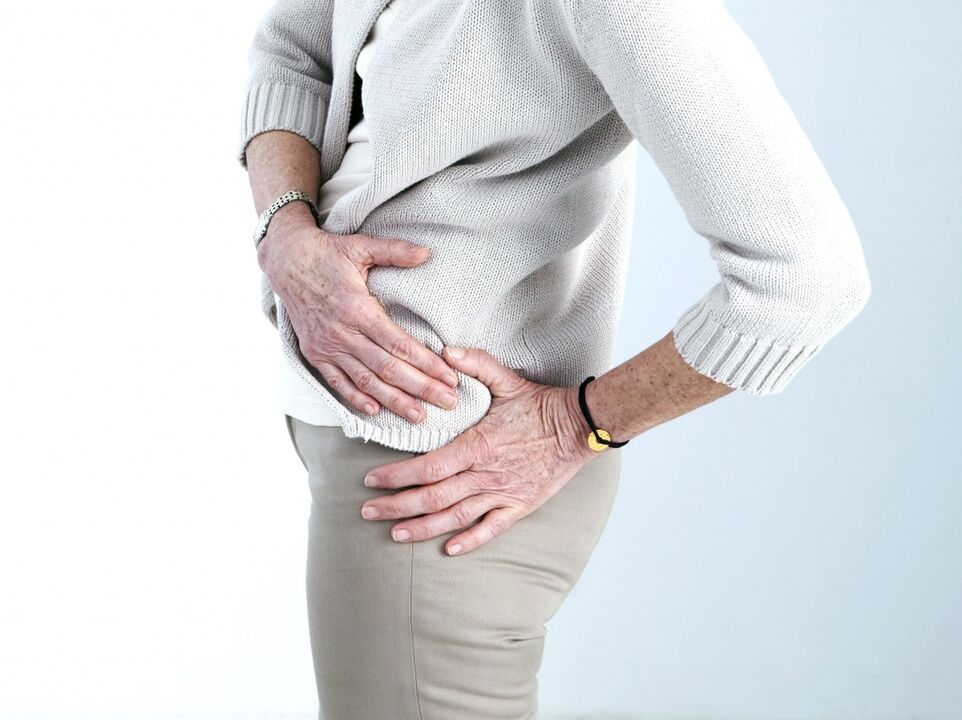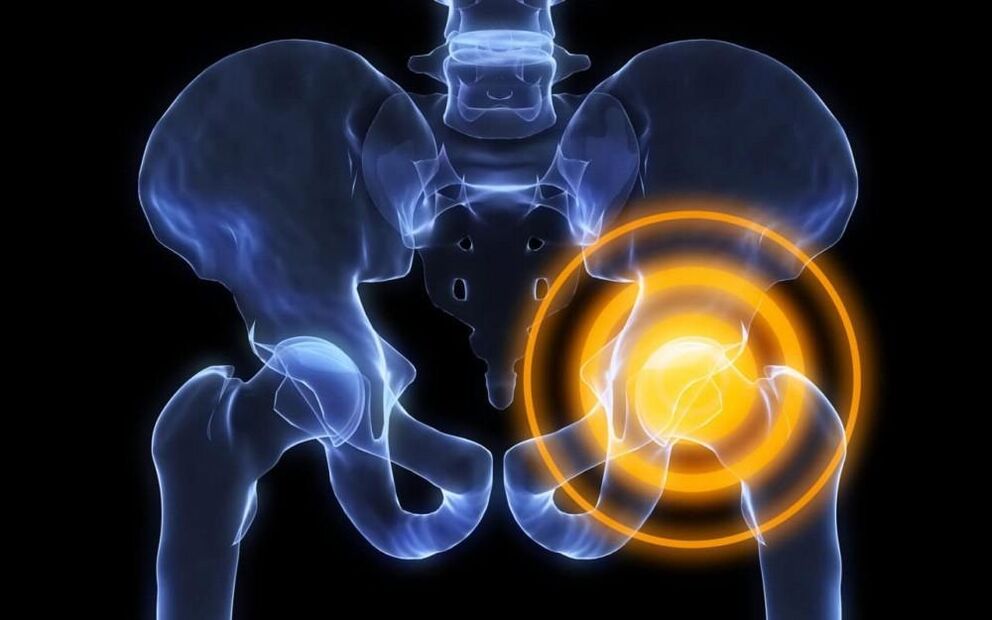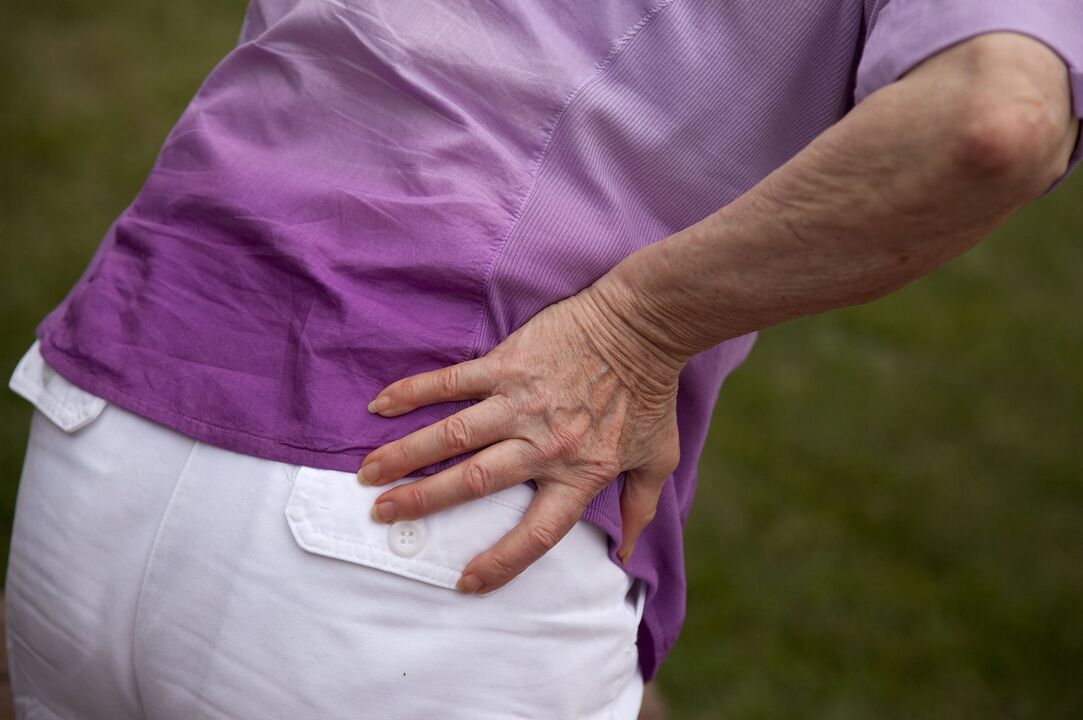
The appearance of pain in the hip joint should definitely be a warning, because this is the largest bone connection where the walking process is not possible. It maintains balance, redistributes body weight between the spine and lower extremities. When the function of the hip joint is impaired, the patient's quality of life immediately decreases, physical activity decreases.
If you feel pain in the hip joint, you need to determine the cause. The treatment of pain depends on the pathology that is its symptom. Strict adherence to complex measures and recommendations will help to get rid of the disease and maintain motor function of the joint.
Disruption of the hip joint makes it impossible to move actively. Decreased functionality limits the patient in terms of independent movement and performance.
So, what are the causes of such unpleasant discomfort in the hip joint and how to treat it at home? Let's try to understand this.
Reasons
Pain in the hip joint can appear for various reasons: both on the right and left joint itself, as well as due to damage to adjacent bones, cartilage or ligaments. Congestion and restriction of movement along the entire hip often manifests itself as a painful symptom.
Diseases of the hip joint can appear at any age, but most worry the elderly. If pain occurs, it is advisable to consult a general practitioner, who will schedule an initial examination and recommend which doctor to consult.
The most common causes of hip pain are:
- dislocations;
- fractures;
- infectious inflammation or arthritis;
- degenerative changes or osteoarthritis (coxarthrosis);
- aseptic necrosis of the femoral head;
- inflammation of the periarticular sac (bursitis);
- non-infectious inflammation in autoimmune diseases of connective tissue;
- pregnancy period.
The prevalence of pain syndrome in this localization increases with age. If hip pain is found in 8-10% of young people under the age of 18, in middle-aged people this figure is 20-30%. Between the ages of 50-59, 40% suffer, and among the elderly 50-60%. Women suffer more from this localized pain syndrome than men.
According to age
Pathological conditions characteristic of different age groups that cause pain in the hip joint:
- Adults and the Elderly. Osteoarthritis (coxarthrosis), joint injuries and deformities, compression of the acetabulum.
- Children and adolescents. Perthes disease, transient synovitis, acquired varus deformity, tuberculous lesions, joint injuries and deformities.
- Newborns and infants up to 1 year. Congenital dislocation of the hip, the consequences of the common pineal gland, acute purulent osteoarthritis, congenital varus deformities.
Bursitis
The main symptoms of bursitis:
- with the development of the disease, the appearance of back pain;
- increased discomfort when moving the foot;
- increased pain after prolonged sitting, back pain;
- Acute and burning pain spreads to the entire surface of the thigh, especially when sleeping on the side at night.
If an infection is present, a purulent bursitis with sharp pain in the hip joint may appear. A characteristic symptom of this type of bursitis is the inability to fully extend the leg. When pressed, a firmness is felt that can spread over the large surface of the thigh. Maybe the appearance of back pain.
Osteoarthritis (coxarthrosis)
Coxarthrosis is based on degenerative (destruction) and dystrophic (nutrition) processes in the hip joint. As a result, the joint ceases to perform its functions - the movements of the legs are impaired. It can be an independent disease or develop with secondary damage to the joint (tumor in the bone). Coxarthrosis re-develops in old age after a hip fracture.
Depending on the severity of the changes in the joint, there are 3 stages of coxarthrosis.
- In stage 3, patients with hip pain are anxious, even at rest and at night. A marked lameness that forces you to use a cane.
- In stage 2 coxarthrosis, the pain begins to spread to the groin area, the inside and front of the thigh, and often falls to the knee. They appear after a normal daily load, but do not bother at rest.
- Stage 1 is characterized by pain in the hip joint that occurs during extreme stress: climbing stairs with a load in your hand, walking more than 2-3 kilometers, running. After a short rest, the pain decreases.
The choice of treatment for osteoarthritis of the hip joint depends on the severity of changes in the joint. Grades 1 and 2 of the disease, as a rule, can be treated conservatively. Anti-inflammatory drugs, chondroprotectors, drugs that improve blood circulation in the joints, physiotherapy and therapeutic exercises are prescribed. The last stage is treated only with the help of operations.

Hip fracture
It is a very common injury, especially in older people with weak bones. This condition is characterized by severe pain and inability to move in the joint.
In this case, hospitalization is necessary for proper treatment, because a hip fracture is often complicated by an infectious process, such as bacterial arthritis, etc. The addition of inflammation significantly impairs the healing of fractures and contributes to improper bone fusion.
Dislocation of the hip joint
This is often the result of traffic accidents, as well as falls and various occupational injuries.
Clinical manifestations of dislocation: unbearable sharp pain, almost absolute difficulty in the movement of the lower extremities, loss of sensitivity of the foot and ankle joint with damage to the nerve endings. Symptoms with bilateral joint dislocation are expressed in the form of intermediate claudication, or so-called "duck gait. "
It is worth emphasizing a concept such as congenital hip dislocation diagnosed in newborns. This disease is the result of underdevelopment of the acetabulum, so the femoral head protrudes beyond its boundaries, resulting in dislocation.
Subluxation
This is an incomplete loss of contact between the head of the femur and the acetabulum. The person does not feel sharp pain, motor activity is somewhat limited, but unpleasant feelings are always present.
Rheumatism
Systemic connective tissue disease accompanied by damage to the joints and valvular apparatus of the heart. Streptococcus develops more often in girls and young women after a sore throat.
About two weeks after the disease, severe pain develops in the large joints, which gradually decreases and disappears. Rheumatism does not cause permanent damage to the joints, its main danger is the development of acquired heart defects.
Arthritis
Arthritis is especially common in the elderly. The older a person is, the more processes can occur in his joints. There is discomfort in the legs and groin area, cramps can be felt in the front of the thigh and can even reach the knee. Symptoms are worse when walking and resting on the feet. It is difficult to get up from a sitting position, which causes severe pain in the hip joint.
Weakness often increases in the morning, but physical activity decreases. However, with excessive loads, unpleasant feelings increase and stiffness is observed in movements. Treatment depends on the diagnosis, usually prescribed anti-inflammatory drugs, exercise therapy and hormonal drugs.

Infections
Infectious arthritis can be caused by viruses such as influenza, staphylococcus, streptococcus and others. . . In such cases, the disease progresses rapidly. Fever begins, swelling is observed in the affected joint area. Acute pain in the hip joint is observed with movement and even touching the affected area.
A slightly different symptomatology is observed in tuberculous arthritis, which most often affects the hip joint. In this case, the disease is felt gradually. At first, a person begins to feel a slight pain during walking, which spreads to the leg - the middle part of the thigh or knee. As the disease progresses, the hip is restricted in movement in all directions, and the affected area swells.
Tendinitis
Inflammation of the tendons or tendonitis usually affects people who are exposed to high levels of regular physical activity. Often these are athletes. It should be noted that the disease sometimes persists invisibly, especially if the patient reduces the load on the hip joint. Conversely, with very active movements and heavy loads, the pain becomes very strong.
Tendonitis is treated with anti-inflammatory drugs - non-steroidal anti-inflammatory drugs can be prescribed.
Which doctor treats?
If you have pain in the hip joint, you may need the help of these doctors:
- rheumatologist;
- Traumatologist or orthopedist;
- Physiotherapist;
- Neurologist.
The specialist will conduct a survey and examination of the patient, and will schedule a comprehensive examination.
Diagnostics
Laboratory and instrumental research methods:
- X-ray examination and ultrasound. They are the gold standard for almost all diseases of the hip joint.
- General blood test. This will allow you to assess the general condition of the body.
- Biochemical blood test and specific markers of rheumatic diseases.
- Urine examination. The color, quantity, transparency and density of urine are determined. In addition, protein, glucose and bilirubin are important indicators.
- Morphological examination of biopsy specimens. It is especially often used to study the structure of the material obtained in cases of suspected skeletal oncological diseases.
- CT scan. The joint in several projections allows you to visualize the bone tissue and determine its density.
- Magnetic resonance imaging. It is reflected in thin layers of body tissue in any plane.
- Osteosyntigraphy. With the use of osteotropic radiopharmaceuticals, the state of blood flow in bone tissue and the intensity of metabolic processes are visualized.
Pay attention to the reduction of joint mobility. Remember that the disease is accompanied by fever, headache, local hyperemia, edema and other local manifestations. Do not be afraid to draw the attention of a specialist to the possible causes of the disease. Describe in detail everything that worries you.
How is hip pain treated?
What to do if painful symptoms are found in the hip joint? After all, the pelvis is an important link in the musculoskeletal system. And if you have severe pain, you should contact a specialist immediately. It will help diagnose and determine the cause of the problem. The sooner the diagnosis is made, the more effective the treatment will be.
If you suspect that mild pain is associated with a minor injury or overuse of the joints, the following measures can be taken:
- avoid stress in a painful joint, keep it calm;
- take non-steroidal anti-inflammatory drugs;
- It is recommended to sleep on the healthy side during sleep.
Drug treatment consists of a complex administration of drugs in different directions:
- Hondoprotectors, mineral and vitamin complexes.
- Muscle relaxants that reduce pain-induced spasms.
- NSAIDs and steroids. Steroid medications are prescribed only for severe symptoms.
- Means to improve microcirculation. They eliminate edema and hypoxic manifestations in the affected area.
- Diuretics to reduce swelling in the inflamed area.
Physiotherapeutic measures are also of great importance in the treatment of diseases of the hip joints. They are performed after the removal of acute inflammation and severe pain. Electrophoresis has proven to be good, with the help of which high concentrations of drugs can be created directly in the affected area.
An advanced method is laser therapy, which has analgesic, resorption and anti-inflammatory effects. Magnetotherapy, diode dynamotherapy and drug phonophoresis are also used successfully.

























